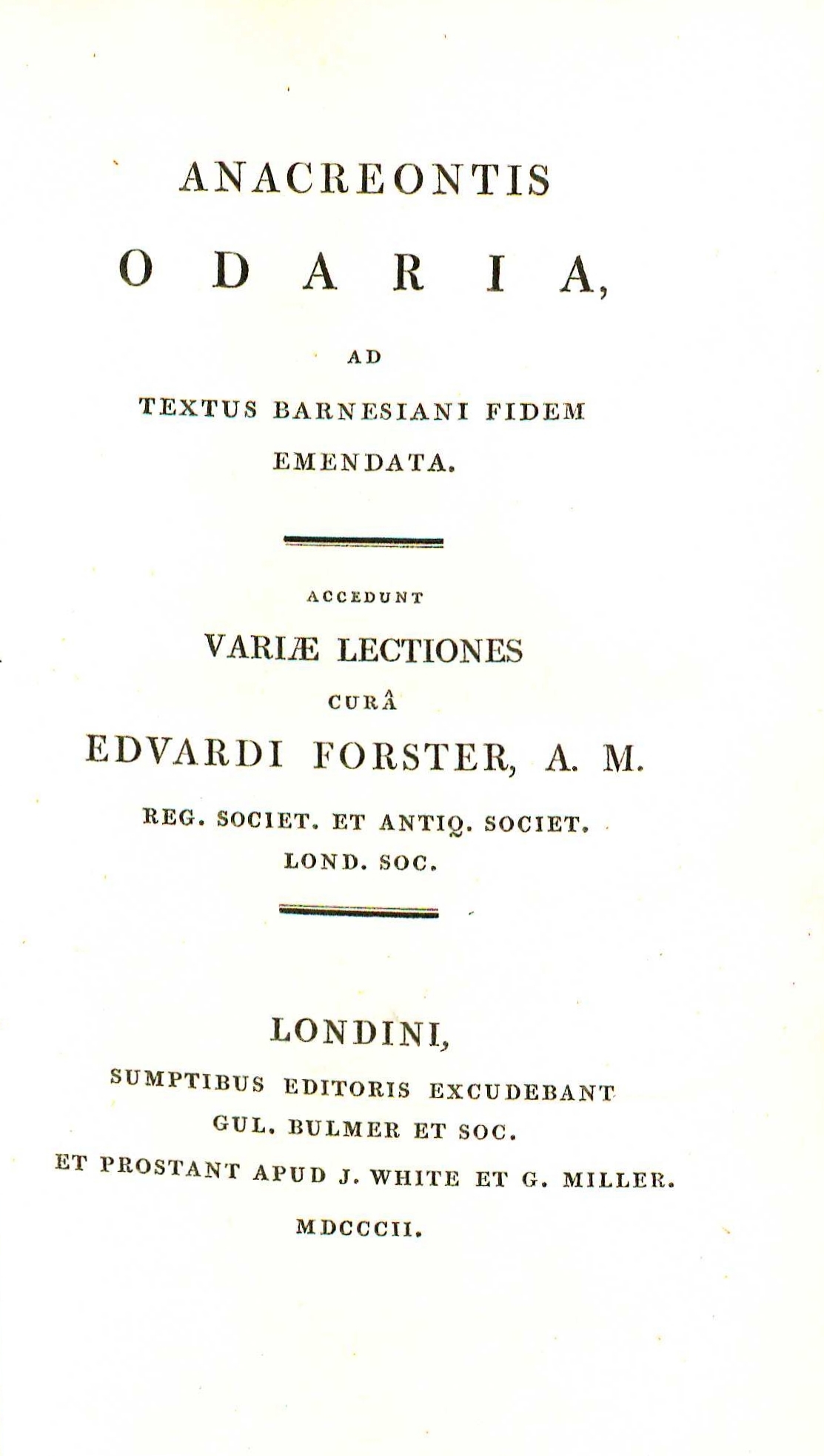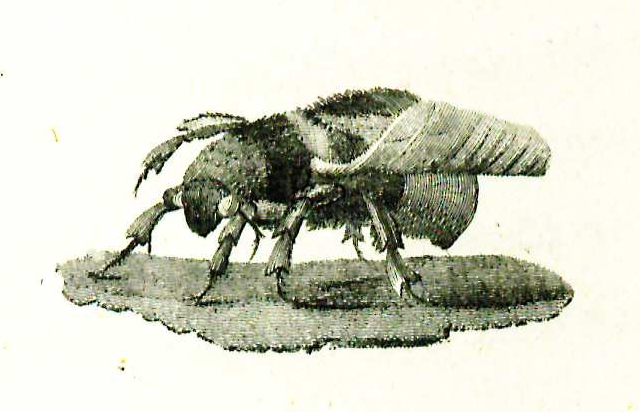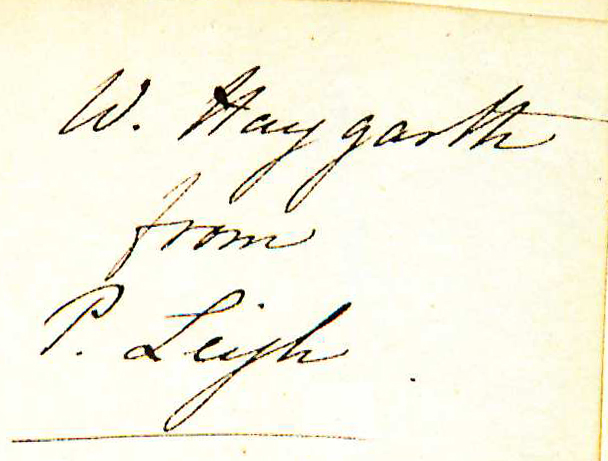Anacreontis Odaria ad textus Barnesiani fidem emendata
by Anacreon
| Anacreontis Odaria ad textus Barnesiani fidem emendata | |
|
Title page from Anacreontis Odaria ad textus Barnesiani fidem emendata, George Wythe Collection, Wolf Law Library, College of William & Mary. | |
| Author | Anacreon |
| Translator | Edward Forster |
| Published | Londini: Sumptibus editoris excudebant Gul. Bulmer et Soc. et prostant apud J. White et G. Miller |
| Date | 1802 |
| Language | Greek with Latin notes |
| Desc. | 12mo (20 cm.) |
| Location | Shelf H-2 |
Few of Anacreon’s works survive, but those that do focus on wine, love (homosexual and heterosexual), and the overall pleasures of the legendary Roman symposium.[5] Anacreon used various techniques in his writings, including self-deprecation and irony.[6] The collection of miscellaneous Greek poems from the Hellenistic Age and beyond known as the Anacreontea[7] was “mistakenly labeled” with Anacreon’s name. Despite later appreciation for Anacreon’s true poems, his works were not appreciated during his lifetime.[8]
This particular work is a collection of the extant Odes by Anacreon published in Ancient Greek with notes in Latin.
Evidence for Inclusion in Wythe's Library
Listed in the Jefferson Inventory of Wythe's Library as "Anacreon. Gr. Forster. 12mo." This was one of the books kept by Thomas Jefferson. Jefferson later sold a copy of "Anacreon. Gr. Forster" to the Library of Congress in 1815, but it no longer exists to verify Wythe's prior ownership.[9] The Brown Bibliography[10] and George Wythe's Library[11] on LibraryThing include the 1802 London edition based on E. Millicent Sowerby's inclusion of that edition in Catalogue of the Library of Thomas Jefferson. The Wolf Law Library purchased a copy of the same edition.
Description of the Wolf Law Library's copy
Bound in near contemporary full brown diced calf with gilt rules, decorative elements and lettering. Includes an early gift inscription "W. Haygarth from P. Leigh" on the front flyleaf and the bookplate of Peter Issac on the front pastedown.
Images of the library's copy of this book are available on Flickr. View the record for this book in William & Mary's online catalog.
See also
- George Wythe Room
- Jefferson Inventory
- Hai tou Anakreontos ōdai kai ta tēs Sapphous kai ta tou Alkaiou Leipsana
- Odes of Anacreon
- Wythe's Library
References
- ↑ " Ana'creon” in The Oxford Companion to Classical Literature, ed. by M.C. Howatson (Oxford: Oxford University Press, 2011).
- ↑ Ibid.
- ↑ Ibid
- ↑ Marty Roth, "Anacreon’ and Drink Poetry; or, the Art of Feeling Very Very Good,” Texas Studies in Literature and Language 42, no. 3 (Fall 2000): 314.
- ↑ "Anacreon" in Oxford Dictionary of the Classical World, ed. by John Roberts (Oxford: Oxford University Press, 2007).]
- ↑ Ibid.
- ↑ Ibid.
- ↑ Roth, "Anacreon’ and Drink Poetry; or, the Art of Feeling Very Very Good,” 317.
- ↑ E. Millicent Sowerby, Catalogue of the Library of Thomas Jefferson, (Washington, D.C.: The Library of Congress, 1952-1959), 4:477-78 [no.4405].
- ↑ Bennie Brown, "The Library of George Wythe of Williamsburg and Richmond," (unpublished manuscript, May, 2012) Microsoft Word file. Earlier edition available at: https://digitalarchive.wm.edu/handle/10288/13433
- ↑ LibraryThing, s. v. "Member: George Wythe", accessed October 8, 2013.
External Links
Read this book in Google Books.



